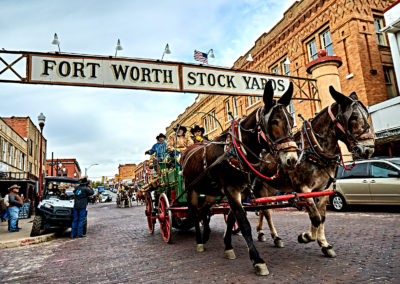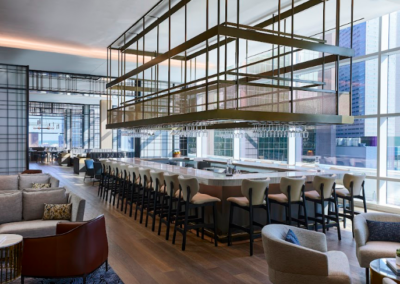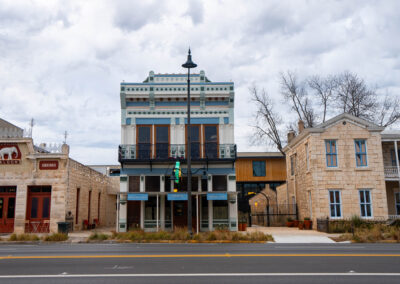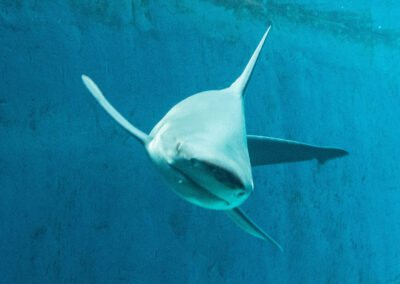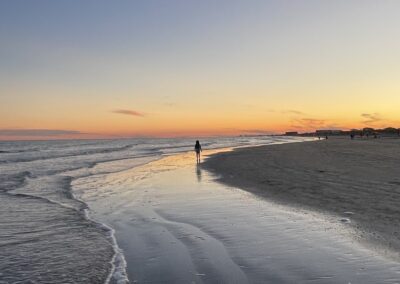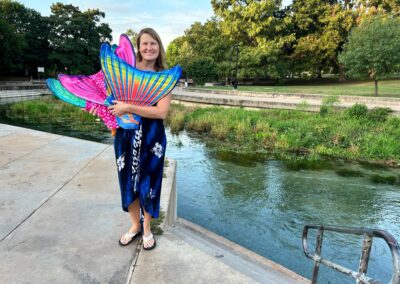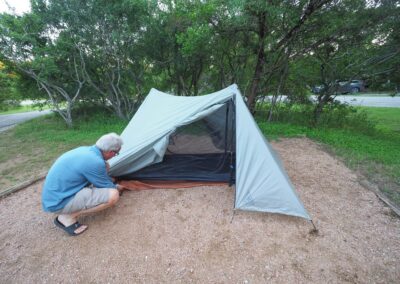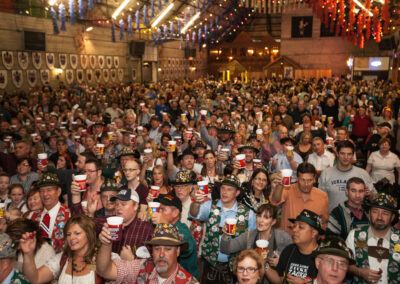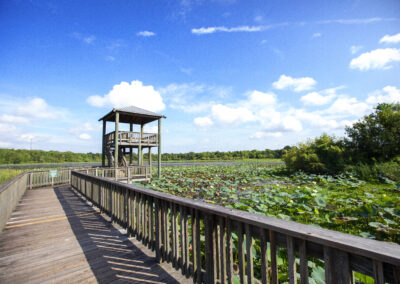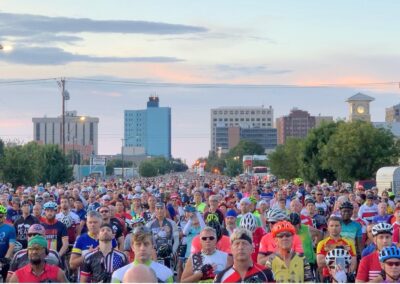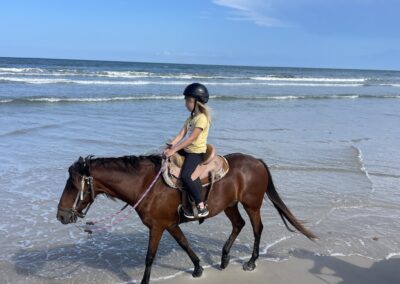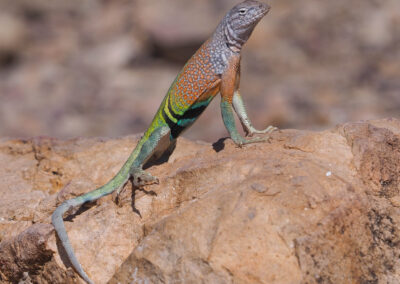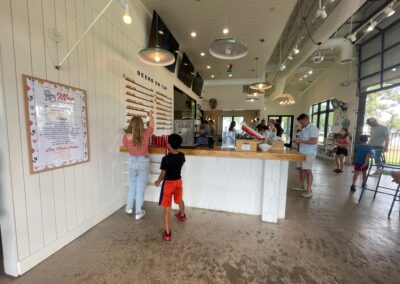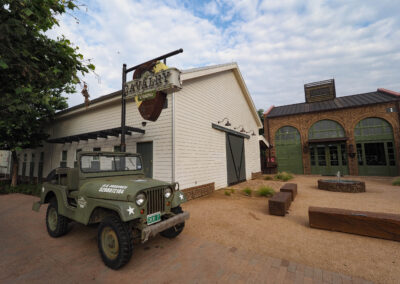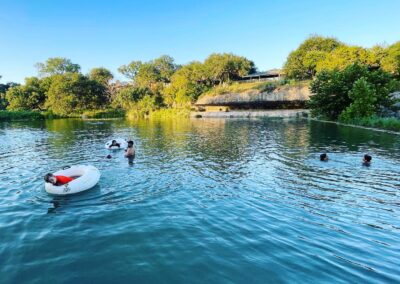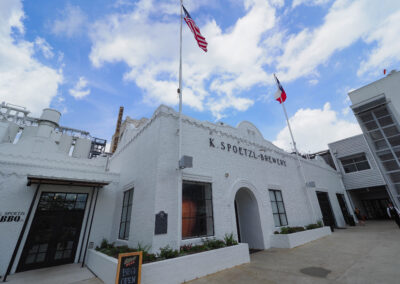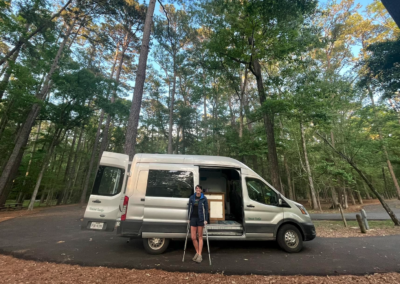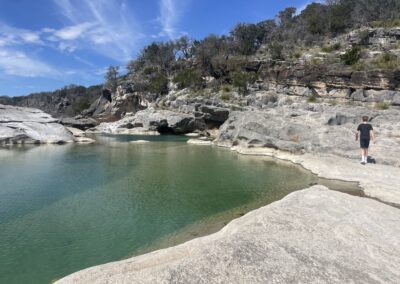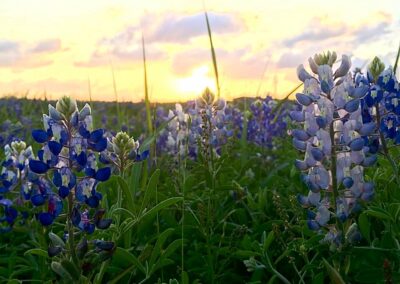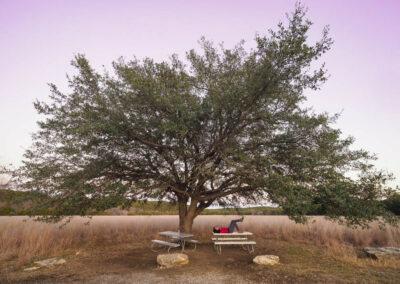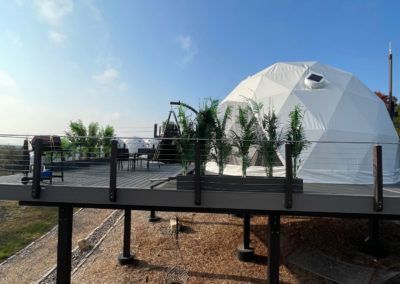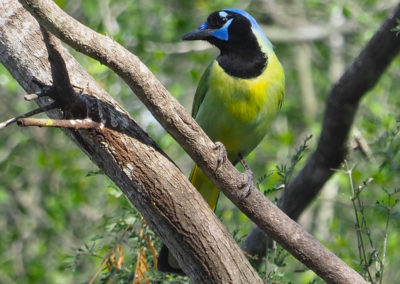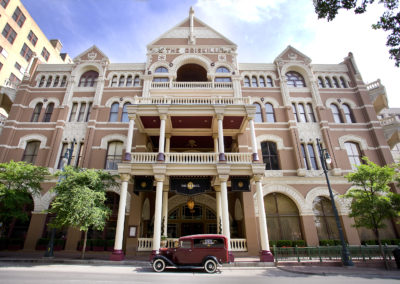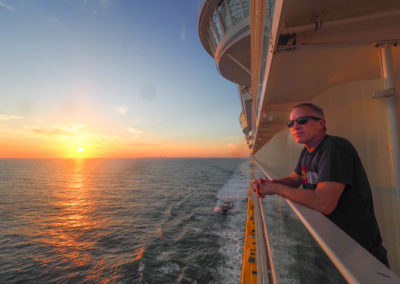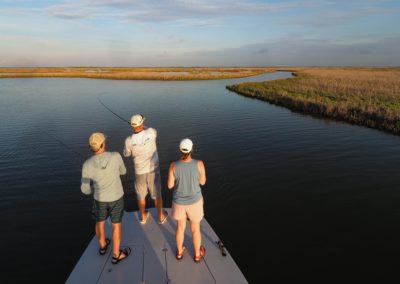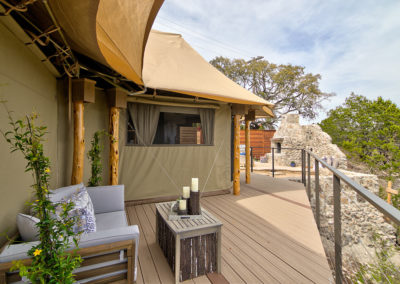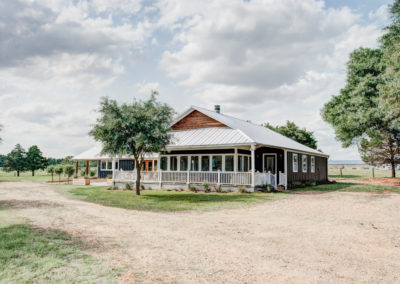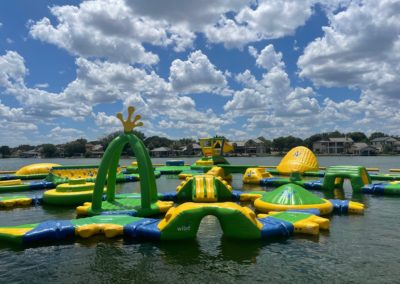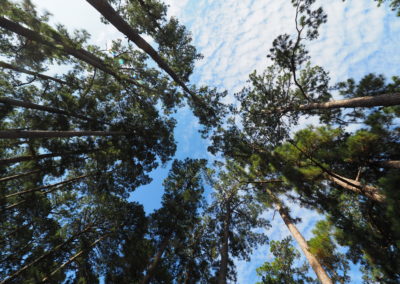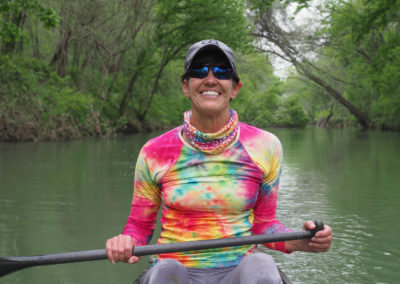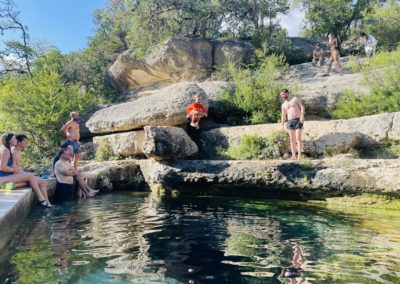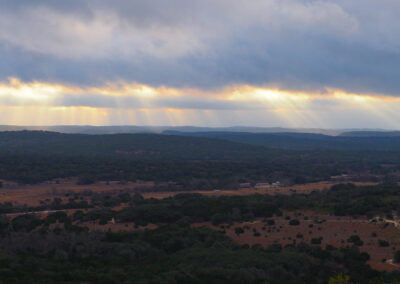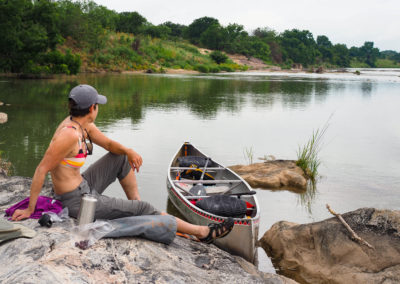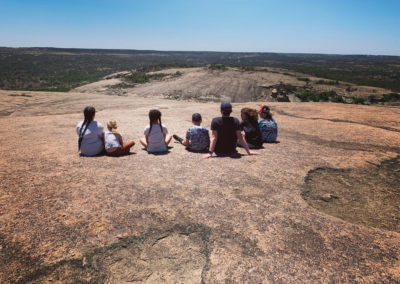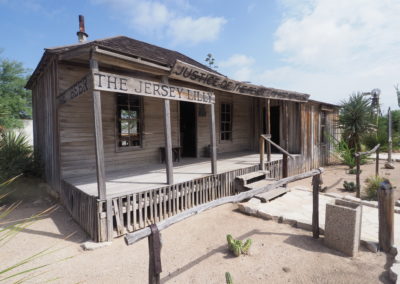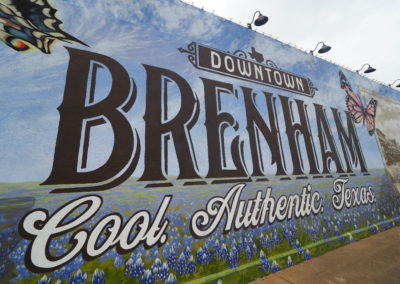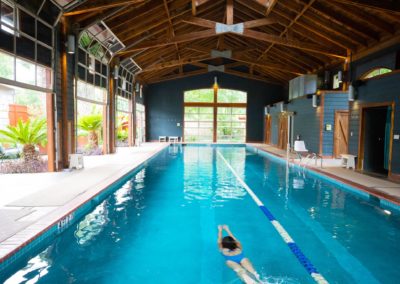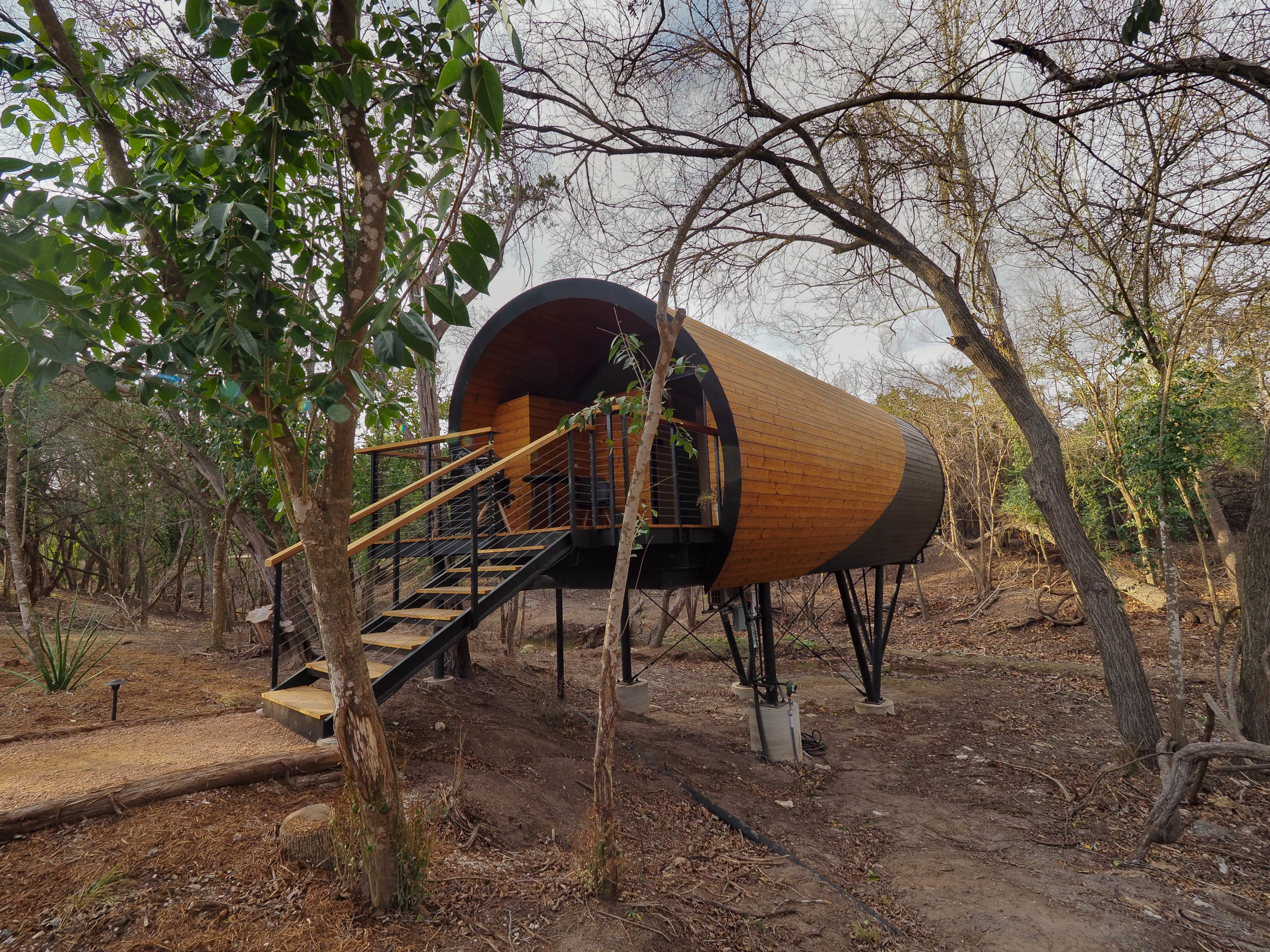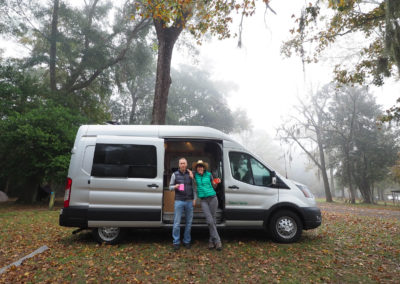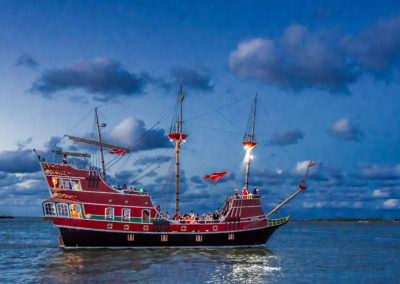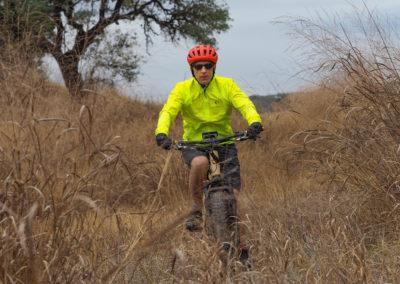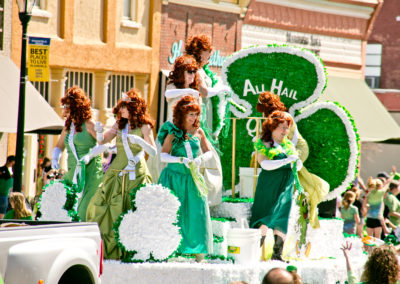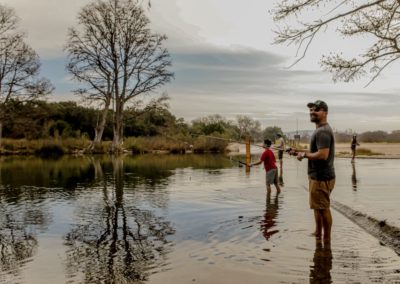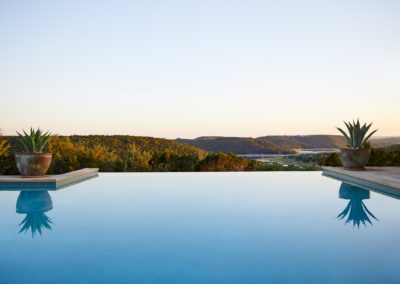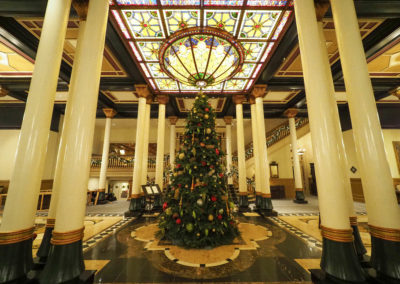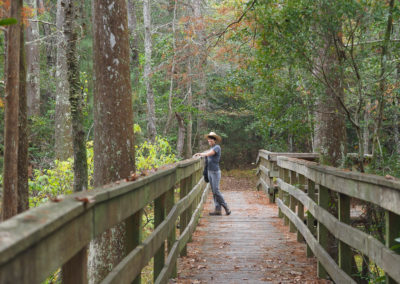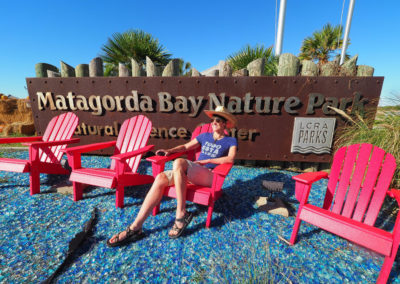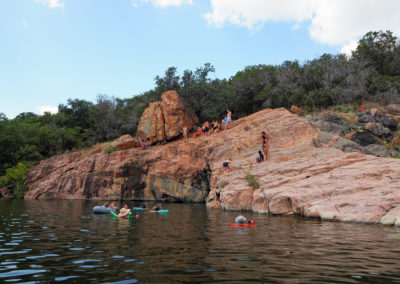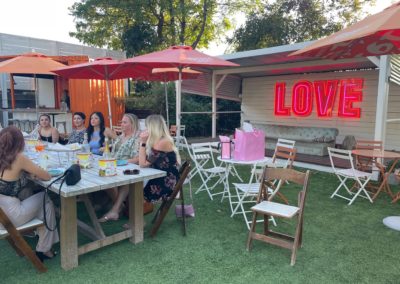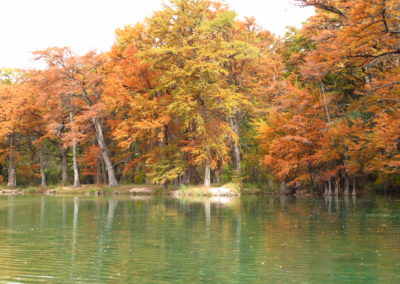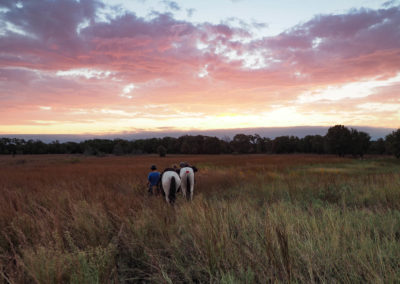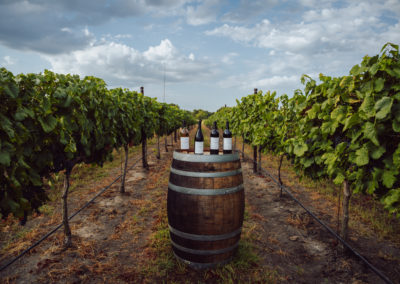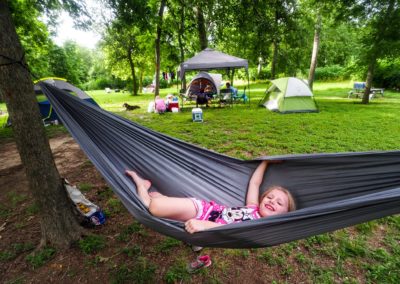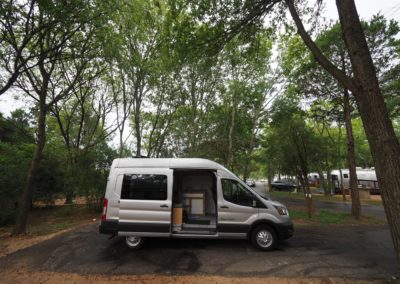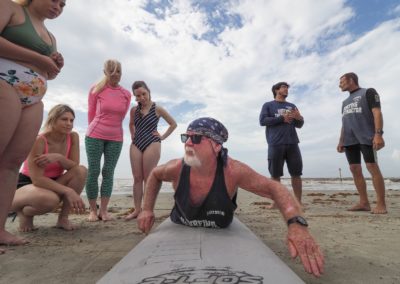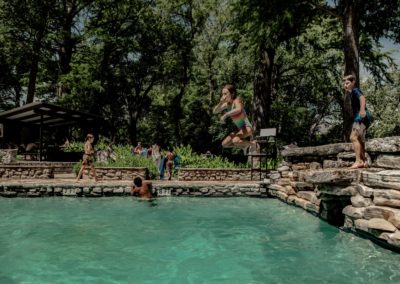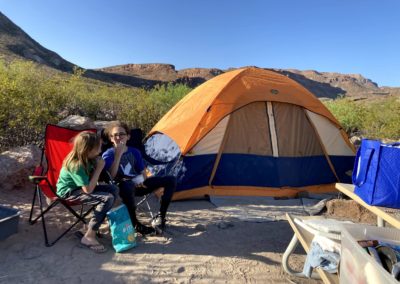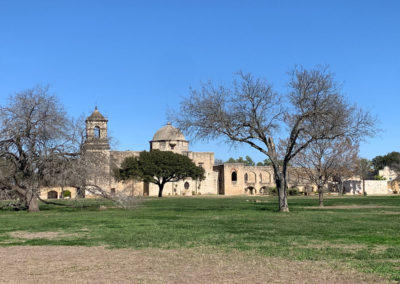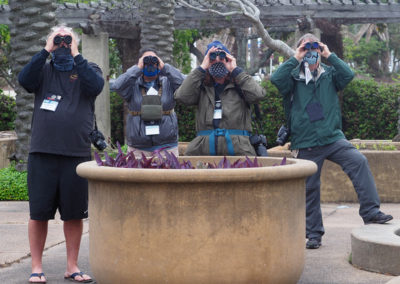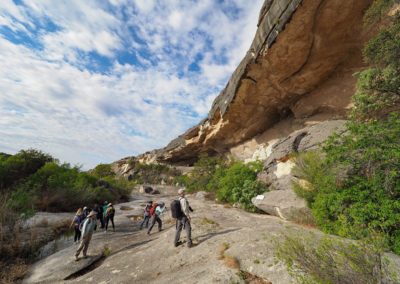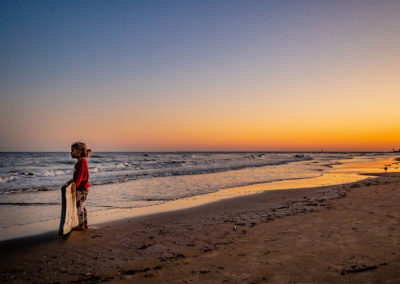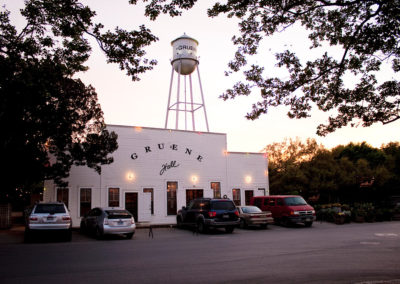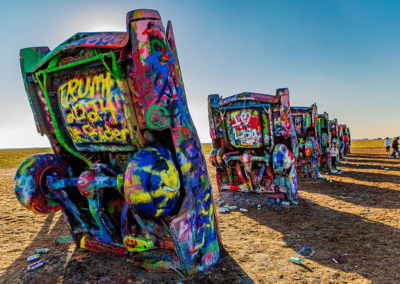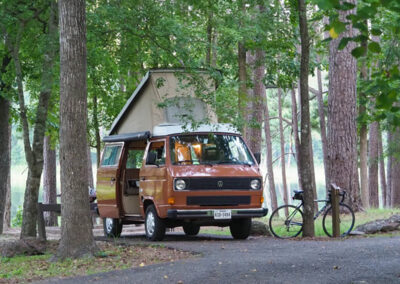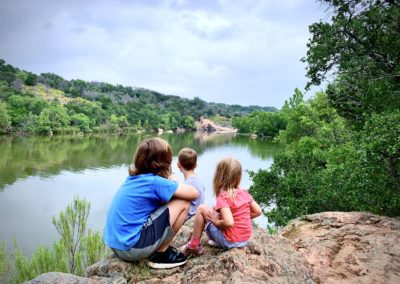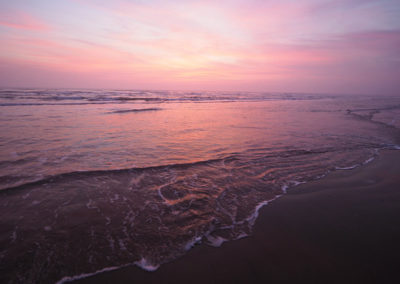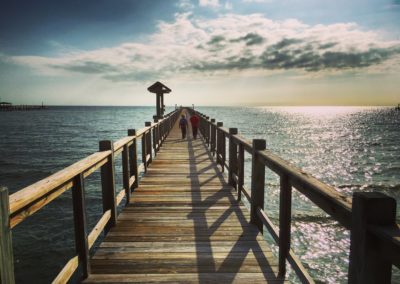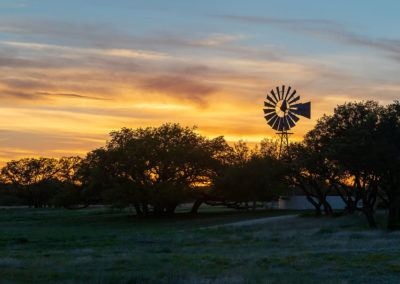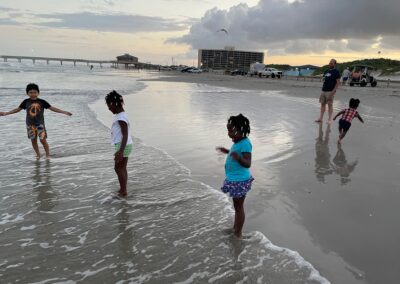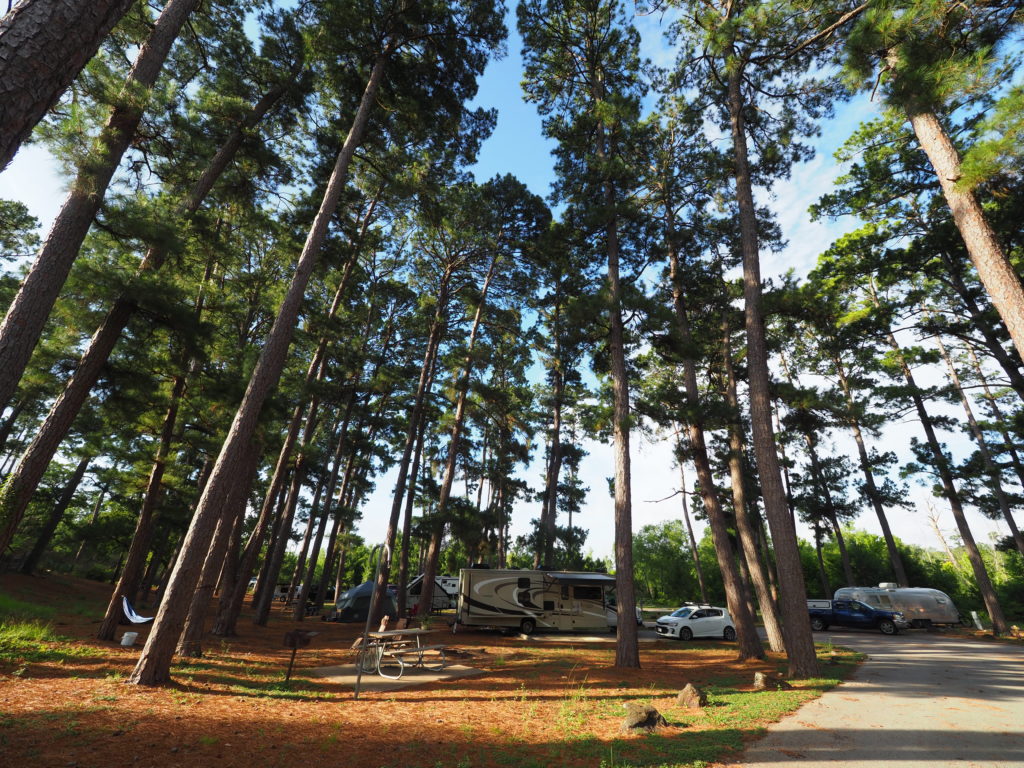
Tall pine trees still stand in some sections of Bastrop State Park. Pam LeBlanc photo
I grew up in Austin, and my family spent a lot of weekends picnicking beneath the swaying trees and sliding down pine-needle covered hillsides at Bastrop State Park.
The park also provided the setting for a memorable family story. Not long after we moved to Texas from Michigan, my dad heard about the state’s reputation for beef brisket. He never cooked much at home, but he always did the grilling when we camped or visited parks. He bought a brisket from the grocery store, and tossed it on our portable hibachi at the park. After cooking it for an hour, he declared it ready to eat.
As any good Texan knows, you can’t cook a brisket in an hour; it takes all day – and then some. We’ve been laughing about it ever since.
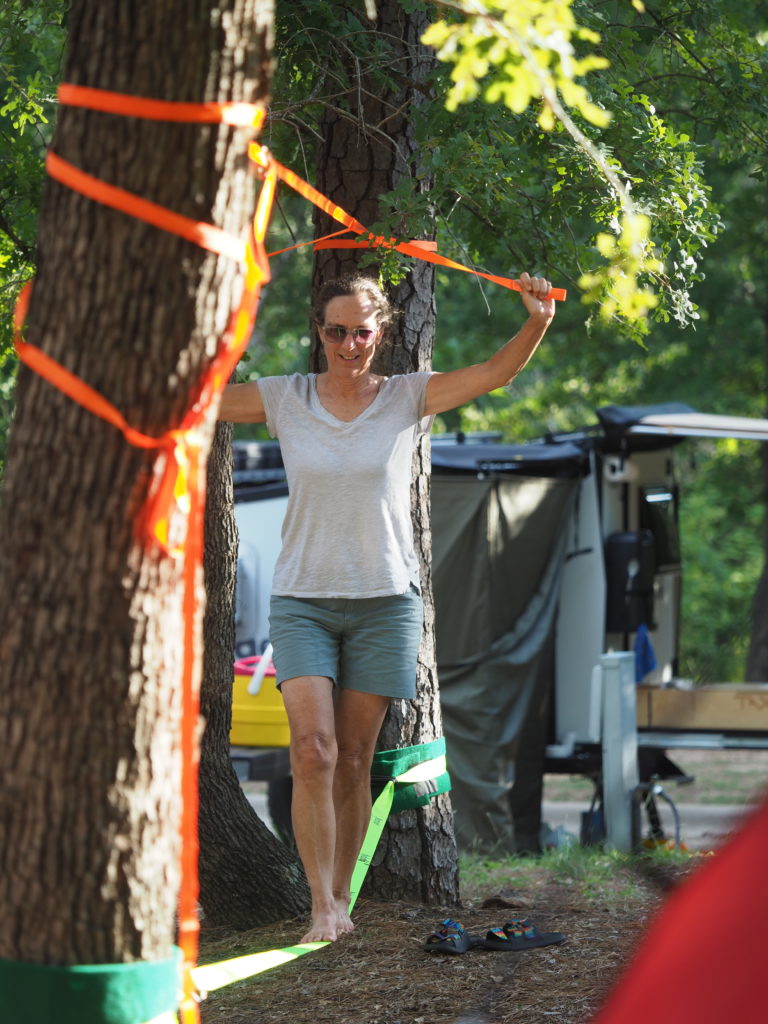
Mo Jennings walks a slack line at Bastrop State Park in July 2022. Pam LeBlanc photo
In the years that passed since we wore out our jaws trying to chew that meat, I’ve camped at the park, biked for miles on gravel roads surrounding it, and stayed half a dozen times in the historic stone cabins built there by the Civilian Conservation Corps in the 1930s.
But my visits mostly ended when fire swept through Bastrop in 2011, consuming 32,000 acres, destroying more than 1,600 homes, and killing two people in the area. Then, in 2015, a flood took out a dam that contained a small lake within the park’s boundaries.
I didn’t see much reason left to visit.
Related: Eight beginner-friendly places to paddle in Central Texas
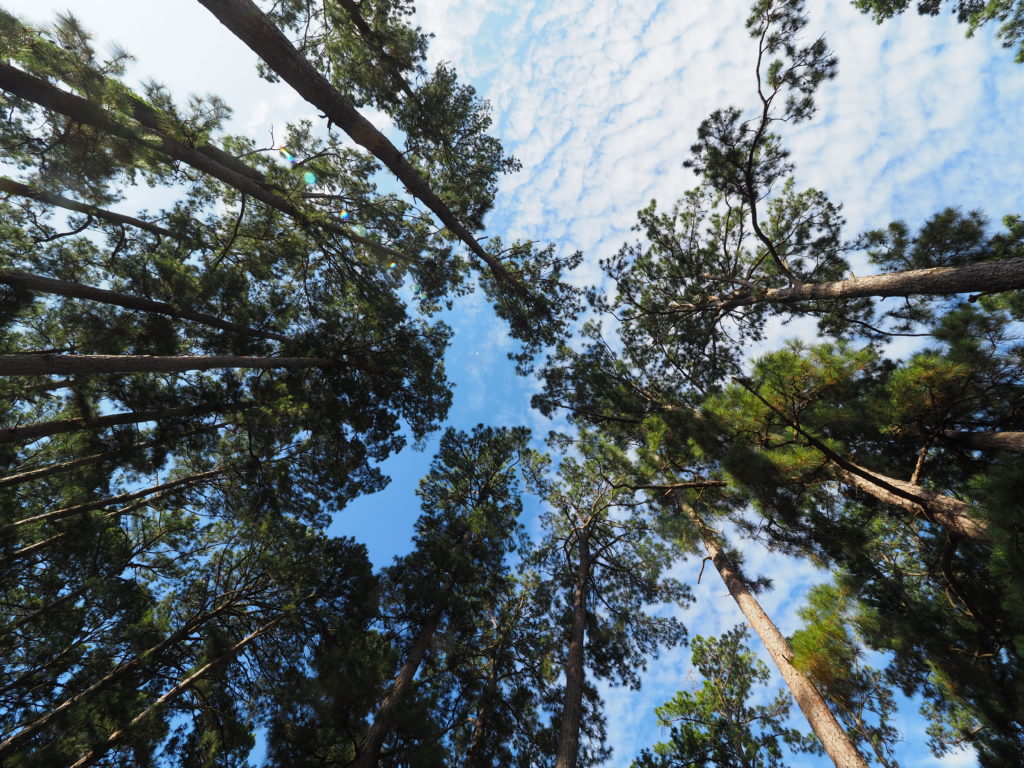
Pine trees tower overhead at Bastrop State Park. Pam LeBlanc photo
I stand corrected. Last month, I tagged along when a group of friends gathered at Bastrop State Park for a weekend of camping, swimming, biking, slack lining, and hanging out beneath the stars.
A few changes at Bastrop State Park
The Civilian Conservation Corps built stone cabins, culverts, bridges and fences at the park in the 1930s, and the 6,600-acre oasis officially opened in 1937. It earned National Historic Landmark status in 1997.
Towering loblolly pines once swayed overhead everywhere you looked at the park, home to the westernmost stand of loblolly pines in the United States.
But the 2011 fires damaged 96 percent of the parkland, and most of those towering trees burned in the blaze. Still, if you change your frame of reference, the view today is hopeful, if scarred.
Starting in January 2013, rangers, biologists and volunteers began replanting loblolly pines to replace some of those lost in the fires. They planted about 2 million seedlings.
Today, some of those trees stand taller than me. And thousands of much smaller trees are sprouting on the forest floor. In areas like the park’s Copperas Creek Campground where I stayed last month, some of the original trees remain, giving a taste of what the entire park once looked like.
Related: Six places to park your campervan in Texas
The park is open, but if you visit, you might encounter some construction. Crews are rebuilding the dam that held the 10-acre lake, once a popular place to fish. The two-year project began in January 2021 and construction crews should finish it by early next year.
Fire crews saved the historic cabins, built in the 1930s by the Civilian Conservation Corps, but they’re closed temporarily as the dam is rebuilt. They should reopen later this year.
A dip in the pool at Bastrop State Park
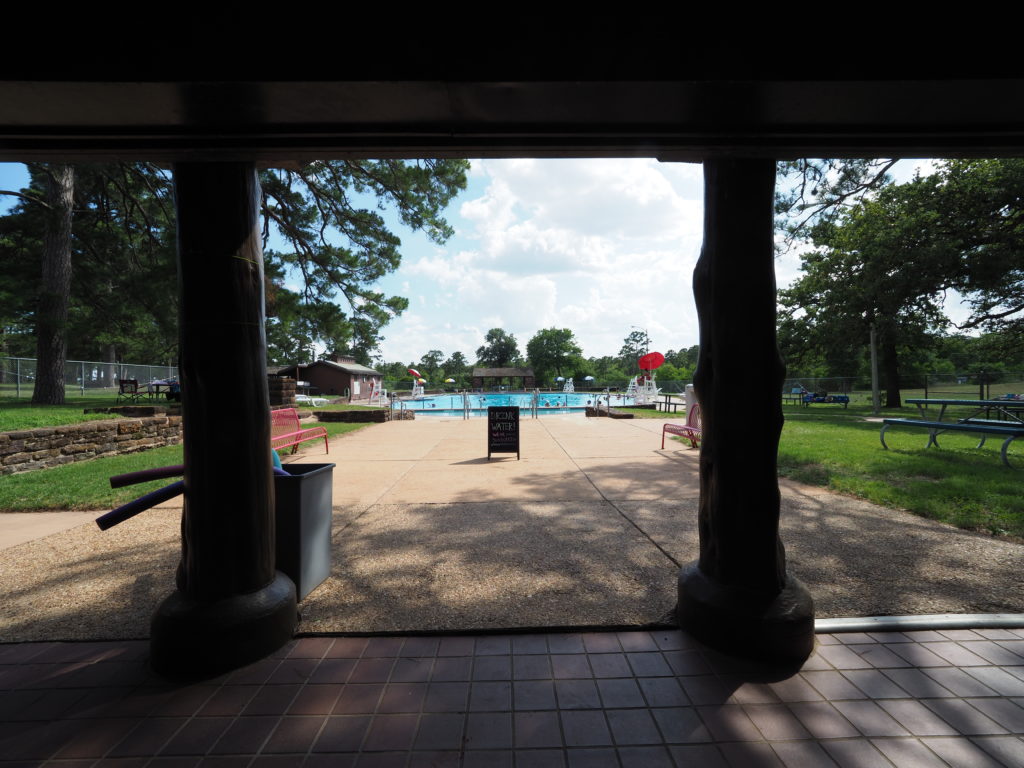
Visitors must make reservations to swim in the pool at Bastrop State Park. Pam LeBlanc photo
People go to Bastrop State Park to hike, bike, and relax, but many overlook the swimming pool, which I consider a hidden gem.
Unlike much of the infrastructure that was built by the Civilian Conservation Corps, the huge, oval-shaped oasis was built by the Works Progress Administration in 1932. It’s been resurfaced since then, but it looks very much like it did when it first opened.
I made reservations for a Saturday afternoon. Because the pool is short-staffed, capacity is limited to just 50 people at a time. That means visitors have plenty of space to spread out beneath trees and swim in the huge pool.
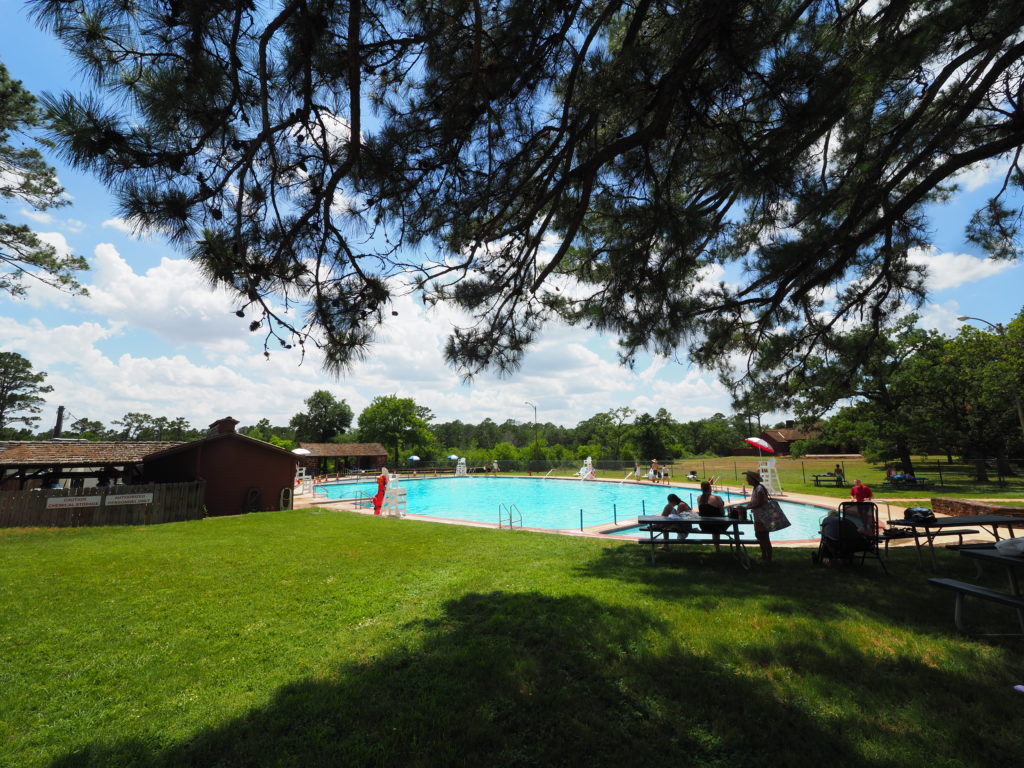
OLYMPUS DIGITAL CAMERA
The facility will be open through Sept. 3, and you can reserve a time slot up to two weeks in advance. Lap swimming is available from 8 until 8:50 a.m. on Tuesdays and Thursdays, and open swimming is allowed in two-hour time slots on Fridays and Saturdays.
Related: Martin Dies Jr. State Park is an East Texas gem
Stretch your legs
Swimming isn’t the only way to squeeze in a workout at Bastrop State Park.
Because of erosion after the fires, some trails at the park have been rerouted. You can still get lost in the growing forest on 7 miles of trails. It’s a good way to get an up close look at the transformation taking place.
Cyclists will find plenty to do, too.
Old golf course pathways have been converted into bike paths, scheduled to open later this summer. And Park Road 1A, which connects Bastrop State Park to Buescher State Park, makes a great 12-mile cycling route. Once hilly and nicely shaded, stretches of the route were exposed during the fires, so bring sun screen. It’s still a lovely – and challenging – ride.
If you prefer gravel, check out Gotier Trace and Antioch roads, and work in a stop at the old Antioch Cemetery, where local pioneers are buried.
If You Go

Getting there:
Bastrop State Park is located 32 miles east of Austin at 100 Park Road 1A in Bastrop.

Stay:
Pitch a tent in one of the park’s campgrounds, or rent a cabin (they’re temporarily closed due to dam construction but will re-open later this summer.) The park’s barracks – four dorms with three rooms each that sleep a total of 64 people – are available for rental, too.
Do:
Camp, swim, picnic, bike or hike the park’s 7 miles of trails. Park admission is $5 for day use and free for ages 12 and under. Pool entry is $5 per adult without park entrance, or $3 with park entrance. Make pool reservations here.
Eat & Drink:
Bring food to cook while you camp, or head to Roadhouse Bastrop, at 2804 Highway 21, just outside the park’s main entrance, for burgers and beer.

Pro Tip:
Want to help the park recover? Volunteer or donate by contacting the Lost Pines Complex volunteer coordinator at (512) 237-2241.










